 Image search results - "air" Image search results - "air" |

Haneda to Tokushima
|
|

Welcome to IbarakiTrain platform of Kairakuen Station.
|
|

Sign and entrance to Tokyo Big Sight
|
|
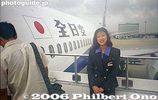
Hi Philbert! Welcome aboard!
|
|

Train platform of Kairakuen Station
|
|

Tokyo Big Sight hallway
|
|

Train platform of Kairakuen Station
|
|

Corridor to anime fair
|
|

Plum Blossom Queen at Kairakuen StationShe was passing out maps of the garden. It was a nice touch to see two of these kimono beauties greeting us.
|
|

PR poster
|
|

Plum Blossom Queen
|
|

The crowds
|
|

Entrance to garden via Tokiwa Shrine. One of Japan's three most famous gardens, Kairakuen is especially noted for thousands of plum blossom trees which bloom in Feb. and March.One of Japan's three most famous gardens, Kairakuen is especially noted for thousands of plum blossom trees which bloom in Feb. and March.
|
|

Character balloons
|
|

Tokiwa Shrine, MitoDedicated to Lord Mitsukuni Tokugawa, the second lord of Mito, and Nariaki Tokugawa, the ninth lord of Mito and the one who built Kairakuen Garden.
|
|

Pretty CureKids could have their picture taken with these characters.
|
|

Bonsai plum treesI bought one of these once and the flowers smelled good before they withred away. The tree also died soon afterward.
|
|

Kids could have their picture taken with these characters.
|
|
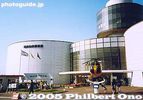
Museum of Aeronautical SciencesThe museum is right at the end of the runway of Narita International Airport.
|
|

Crowd at Higashi-mon East GateThis was the defacto main gate and most crowded since it is closest to the train station.
|
|

Digimon SaversKids could have their picture taken with these characters.
|
|

Omi Fair video taken on March 2, 2014 at Takashimaya Dept. Store in Nihonbashi, Tokyo. Funazushi, Omi beef, Biwa pearls, and more. We also saw Hiko-nyan.
|
|
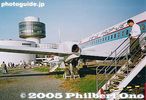
Old YS-11 prop plane.
|
|

Way to Takashimaya Dept. Store in Nihonbashi subway station.
|
|

Map of Kairakuen, a garden built in 1841 by Tokugawa Nariaki (1800-1860), the ninth Lord of Mito. It is one of Japan's three most famous gardens.
|
|
|
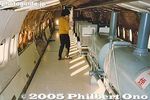
Inside the YS-11
|
|

Way to Takashimaya Dept. Store in Nihombashi subway station.
|
|

Pinickers
|
|

NoddyKids could have their picture taken with this character.
|
|
|
|

Plum blossom-viewing picnickers
|
|

Booth for Hayao Miyazaki's new movie called Gedo Senki (Tales from Earthsea)To be released in July 2006, from Studio Ghibli
|
|
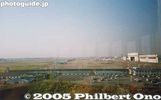
Museum's observation deck.
|
|

Takashimaya got its name from Takashima, Shiga Prefecture.
|
|

Red and white plum blossoms
|
|

Anpan Man (statue)Kids could have their picture taken with these characters.
|
|

1st floor of Takashimaya Dept. Store.
|
|
|
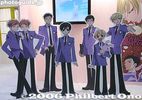
Ouran High School Host Club
|
|

Exhibit of Nagahama bonsai plum trees and folding screen from Hikone, 1st floor of Takashimaya Dept. Store during the Grand Omi Fair.
|
|

White plum blossoms, the most common variety, and with the sweetest aroma.
|
|
|
|
|
|

Folding screen from Hikone (National Treasure).
|
|

Osaka-zuki red plum blossoms 大盃Osaka-zuki
大盃
|
|

PR exhibit for the Grand Omi Fair on the 8th floor.
|
|

Plum tree grove, about a week too early.
|
|
|

Fantastically-shaped plum tree
|
|

1st floor of Takashimaya Dept. Store.
|
|

Konan Shomu plum blossom 江南所無Prunus mume Kounanshomu
|
|

Grand Omi Fair on 8th floor
|
|
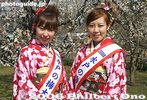
Plum Blossom Queens in Kairakuen, Mito
|
|

Tourist corner with samurai armor of Hikone's Ii Clan.
|
|

Plum Blossom Queens in Kairakuen, Mito
|
|
|
|

Air Nippon YS-11 propeller plane. Donated by All Nippon Airways in 1997.
|
|

Funa-zushi 鮒寿し
|
|

Plum trees and Lake Senba
|
|

YS-11 propeller plane. Open to the public on certain days of the year.
|
|
|
|

Plum trees and Lake Senba
|
|

Front of YS-11 propeller plane.
|
|

Fish and shellfish from Lake Biwa
|
|

Plum trees and Lake Senba
|
|

Propeller
|
|

Ibuki Ham
|
|
|

Ibuki Ham
|
|

Torano-o plum blossom (Tiger's Tail) 虎の尾
|
|

Vegetable jam
|
|

Pine trees and plum trees
|
|

Omi beef, each pack here cost over 2,000 yen. 近江牛
|
|

Plum tree grove
|
|

In front of Tokorozawa Aviation Museum is a Curtiss-Wright C-46 transport plane.
|
|
|

Plum tree and train
|
|

The C-46 was used by the Japan Air Self-Defense Forces for cargo transport from the 1950s.
|
|

Stamp of Approval from Shiga
|
|

Monument proclaiming Kairakuen as one of Ibaraki's 100 Best Sights
|
|

Monument for Japan's Birth of Aviation 日本の航空発祥の地・所沢
|
|

Mochi making
|
|

Poem monument
|
|

Mochi
|
|
|
|

Adoberry sweets, from Adogawa, Takashima.
|
|

Closeup of white plum blossom
|
|
|

Adoberry sweets, from Adogawa, Takashima.
|
|

Closeup of red plum blossom
|
|

Inside the Tokorozawa Aviation Museum. You are greeted by a replica of Kai-1, Japan's first military plane developed, produced, and flown at Tokorozawa on April 5, 1911. It flew 10 meters high and 800 meters long for 80 sec. 会式一号機
|
|
|
|
|

Other more modern planes and helicopters are on display in the main exhibition hall. This is a North American T6G.
|
|

Entrance to crafts booths. 工芸展
|
|
|
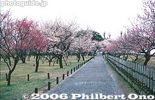
Plum grove
|
|

Sikorsky H-19
|
|

Omi crafts booths
|
|

Japan Air Self-Defense Force helicopter.
|
|

Kimono in the middle costs 1,995,000 yen. However the most expensive thing I saw was a Buddhist altar selling for 40 million yen (lots of gold leaf).
|
|

Path to natural spring
|
|

Inside helicopter
|
|

Making candles.
|
|

Natural spring (cold water)
|
|

Helicopter cockpit with glass bottom.
|
|

Bamboo grovePine trees, bamboo, and plum blossoms are called Shochikubai in Japanese. This trio of trees is most famous.
|
|
|

Omote-mon GateThis supposed to be the front gate.
|
|

Above is a Piper L-21, below is Fuji T-1B.
|
|

Kobuntei Villa has exquisite Japanese-style paintings on paper sliding doors. Kobuntei was damaged by the March 2011 Tohoku earthquake and was closed until early 2012 for repairs.
|
|
|

Entrance to the daruma fair.
|
|

Kobuntei Villa was originally built in 1842 by Tokugawa Nariaki (1800-1860), the ninth Lord of Mito. It was his summer villa.
|
|
|
|

Kobuntei Villa, fusuma sliding door with painting of plum trees
|
|

Remains of a Nieuport 81E2.
|
|

Daruma dolls for sale on the same day as Setsubun
|
|

Kobuntei Villa, fusuma sliding door with painting of azalea
|
|

Replica of Nieuport 81E2. This was first imported to Japan in 1918 and used to train Japanese pilots by a French mission.
|
|

Daruma
|
|

Kobuntei Villa, fusuma sliding door with painting of fall leaves
|
|

Model of Japan's first motorized flight.
|
|

Large daruma at Takahata Fudoson temple, Hino, Tokyo
|
|

Kobuntei Villa
|
|

Turbine engines
|
|

Daruma
|
|

Kobuntei Villa
|
|

Flight simulator (Not as good as Microsoft Flight Simulator.)
|
|
|

Kobuntei Villa
|
|

Control tower equipment.
|
|

The path is lined with daruma doll vendors
|
|

Kobuntei Villa, fusuma sliding door with painting of maple leaves
|
|

Very impressive and educational aviation museum. Great for kids too.
|
|

Daruma dolls
|
|

Kobuntei Villa
|
|

Boeing 747 flight simulator (Not as good as Microsoft Flight Simulator.)
|
|
|

Kobuntei Villa
|
|

Exhibits on Tokorozawa's aviation history.
|
|
|

Kobuntei Villa
|
|

Pilots who flew at Tokorozawa.
|
|

Daruma
|
|

Kobuntei Villa
|
|
|
|
|

Kobuntei Villa
|
|

Pilot's goggles and cap.
|
|

Daruma
|
|

Kobuntei Villa, fusuma sliding door with painting of cherry blossoms
|
|

Bust of General J.P. Faure, a Frenchman who trained Japanese pilots in 1919.
|
|

Kobuntei Villa
|
|

Bust of General J.P. Faure
|
|

Cherry Blossom Room, Kobuntei Villa
|
|

Statue of Japanese aircraft mechanics who worked at Tokorozawa. This is where the aircraft maintenance hangar was.
|
|

Kobuntei Villa
|
|
|

Kobuntei Villa
|
|

Kobuntei Villa
|
|

Kobuntei suffered quite a bit of damage during the big earthquake on March 11, 2011. Repairs have started in Sept. 2011, and they hope to reopen the Kobuntei by Feb. 2012.
|
|
|
|
|
|
|
|

View from the top floor of Kobuntei Villa
|
|

View from the top floor of Kobuntei Villa
|
|

View from the top floor of Kobuntei Villa
|
|
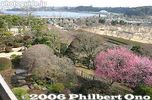
View from the top floor of Kobuntei Villa
|
|

Inside the top floor of Kobuntei Villa
|
|

Inside the top floor of Kobuntei Villa
|
|

Balcony on the top floor of Kobuntei Villa
|
|
|
|
|

Kobuntei Villa
|
|

Kobuntei Villa
|
|

Kobuntei Villa
|
|

Natto fermented beans
|
|

Kairakuen StationThis station, right before Mito Station, is open only during major flower seasons of Kairakuen.
|
|
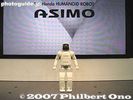
ASIMO show at the Honda showroom in Tokyo.
|
|
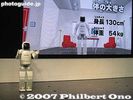
The humanoid robot performs every day. Free show.
|
|

Petite robot
|
|

Look ma, I can stand!
|
|

Hi!
|
|

Spaceman robot
|
|
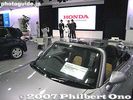
Honda showroom. After the show, you can pose with ASIMO.
|
|
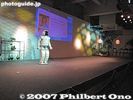
ASIMO also performed at the Great Robot Exhibition at the National Museum of Nature and Science in Ueno during Oct. 23, 2007 to Jan. 27, 2008.
|
|
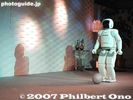
ASIMO playing soccer.
|
|
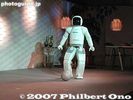
He kicked the ball.
|
|

He dances too.
|
|

And runs.
|
|
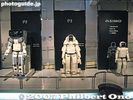
Three robots (including ASIMO) show how Honda improved its humanoid robot. From left to right, the robot got more compact.
|
|

The first humanoid robot called "P2" was large and tall. His hands were claws (see enlarged photo below). Looks very threatening. Introduced in 1996.
|
|

The P3 robot got smaller, but still quite heavy. Introduced in 1997.
|
|

Then the ASIMO in 2000. The current ASIMO is only 130 cm tall and 54 kg. Much less intimidating than its predecessors. ASIMO stands for Advanced Step in Innovative MObility.
|
|

Hand (claw) of the P2 robot.
|
|

Gloved hand of the P3 robot.
|
|

Humanoid hand of ASIMO.
|
|
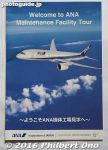
ANA (All Nippon Airways) offers free tours of their maintenance facilities at Haneda Airport in Tokyo. You can see planes in a huge hangar being serviced.You have to make reservations at their website, but everything is in Japanese. They have four 90-min. tours almost daily, but only in Japanese. (Pamphlet has some English.) You should reserve weeks or months in advance because tours get booked up quickly. However, when people cancel their reservations, tours may open up. You have to keep checking. Children must be at least elementary school age. http://www.ana.co.jp/group/kengaku/outline.html
|
|

The ANA (and JAL) Maintenance Facilities are next to each other near Shin Seibijo Station on the Haneda Monorail going to Haneda Airport from JR Hamamatsucho Station.
|
|

Shin Seibijo Station on the Haneda Monorail. ANA's maintenance hangar is a 10-15 min. walk from this station.
|
|

From Haneda Airport's International terminal, you can see ANA's maintenance hangars at the end of Runway A which is one of the airport's original runways.
|
|

After passing the JAL maintenance hangar, you will see this overpass connecting the ANA buildings.
|
|

On the left is the ANA Component Maintenance Building where you check-in for the tour. Show the security guard your reservations (printout of the email confirmation) to enter the building.
|
|

When you enter the building, you will be in the reception lobby.
|
|

Reception lobby of the ANA Maintenance Facility's ANA Component Maintenance Building. There's a gift shop, model planes, and other exhibits. At lunch time, they sold bento so we had lunch here after the tour.
|
|

Gift shop sells ANA goods.
|
|

Pose
|
|

ANA Gundam in the lobby.
|
|

ANA cockpit in the lobby.
|
|
|
|

ANA model planes in the lobby.
|
|
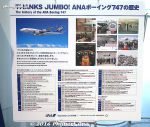
Panel about the 747. ANA retired its last Boeing 747 in March 2014. ANA first flew 747s in 1979. Will be missed.
|
|

In this lecture hall, ANA's tour started with a 30-min. talk and video about flight, their planes, Haneda Airport, etc.Part of ANA's talk was about how planes fly. They demonstrated how wind can lift the wings of a toy plane.
|
|

ANA's lecture hall has some exhibits like model planes.
|
|

ANA's whale plane.
|
|

ANA's Peanuts (Charlie Brown) plane.
|
|

Tire, cockpit window, lights.
|
|

Free souvenir of the tour. Cell phone strap with an ANA maintenance man.
|
|
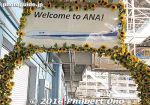
After the slide show lecture, we wore a hard hat and walked on the overpass to the plane hangars. There were around 80 people in the tour and they divided us into around 15 people per group for the hangar tour. Each group had a guide explaining things in Japanese.
|
|

ANA's airplane maintenance hangar at Haneda Airport. Photography was permitted, but no videos. You can post photos online, but you need their approval. These photos here have been approved by ANA. They don't allow ANA personnel and the other tour participants to be pictured. Also cannot show any non-ANA plane.
|
|
|

ANA's Boeing 787
|
|

ANA's Boeing 787 inside the maintenance hangar at Haneda Airport.
|
|

Engine removed from the plane.
|
|

Passenger seats were taken out and the cushions replaced.
|
|
|

Where the tail fits.
|
|

Tires
|
|

Tires
|
|

Tires are not that huge. Tires are inflated with nitrogen, not air (one thing that they always mention).
|
|

They have to replace the tires quite often, every 2 months or so.
|
|
|
|

Extra hangar space.
|
|
|

Jet engine undergoing maintenance.
|
|

Jet engine undergoing maintenance.
|
|
|
|
|

The hangar can get very noisy when they are testing an engine.
|
|

ANA plane
|
|

Always impressive to see a jet plane up close. We see it only on the outside, cannot go inside the plane.
|
|
|
| 1930 files on 8 page(s) |
1 |
 |
 |
 |
 |
|